Transcription coactivator Cited1 acts as an inducer of trophoblast-like state from mouse embryonic stem cells through the activation of BMP signaling
- PMID: 30206204
- PMCID: PMC6134011
- DOI: 10.1038/s41419-018-0991-1
Transcription coactivator Cited1 acts as an inducer of trophoblast-like state from mouse embryonic stem cells through the activation of BMP signaling
Abstract
Trophoblast lineages, precursors of the placenta, are essential for post-implantation embryo survival. However, the regulatory network of trophoblast development remains incompletely understood. Here, we report that Cited1, a transcription coactivator, is a robust inducer for trophoblast-like state from mouse embryonic stem cells (ESCs). Depletion of Cited1 in ESCs compromises the trophoblast lineage specification induced by BMP signaling. In contrast, overexpression of Cited1 in ESCs induces a trophoblast-like state with elevated expression of trophoblast marker genes in vitro and generation of trophoblastic tumors in vivo. Furthermore, global transcriptome profile analysis indicates that ectopic Cited1 activates a trophoblast-like transcriptional program in ESCs. Mechanistically, Cited1 interacts with Bmpr2 and Smad4 to activate the Cited1-Bmpr2-Smad1/5/8 axis in the cytoplasm and Cited1-Smad4-p300 complexes in the nucleus, respectively. Collectively, our results show that Cited1 plays an important role in regulating trophoblast lineage specification through activating the BMP signaling pathway.
Figures
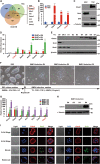
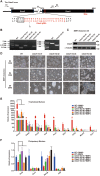
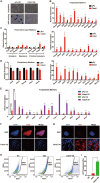

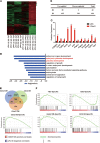

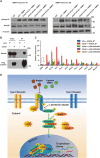
Similar articles
-
Single-stranded DNA binding protein Ssbp3 induces differentiation of mouse embryonic stem cells into trophoblast-like cells.Stem Cell Res Ther. 2016 May 28;7(1):79. doi: 10.1186/s13287-016-0340-1. Stem Cell Res Ther. 2016. PMID: 27236334 Free PMC article.
-
Cited1 is required in trophoblasts for placental development and for embryo growth and survival.Mol Cell Biol. 2004 Jan;24(1):228-44. doi: 10.1128/MCB.24.1.228-244.2004. Mol Cell Biol. 2004. PMID: 14673158 Free PMC article.
-
Selective coactivation of estrogen-dependent transcription by CITED1 CBP/p300-binding protein.Genes Dev. 2001 Oct 1;15(19):2598-612. doi: 10.1101/gad.906301. Genes Dev. 2001. PMID: 11581164 Free PMC article.
-
Bone morphogenetic proteins.Growth Factors. 2004 Dec;22(4):233-41. doi: 10.1080/08977190412331279890. Growth Factors. 2004. PMID: 15621726 Review.
-
Human embryonic stem cells as a model for trophoblast differentiation.Semin Reprod Med. 2006 Nov;24(5):314-21. doi: 10.1055/s-2006-952154. Semin Reprod Med. 2006. PMID: 17123226 Review.
Cited by
-
Region-specific gene expression profiling of early mouse mandible uncovered SATB2 as a key molecule for teeth patterning.Sci Rep. 2024 Aug 6;14(1):18212. doi: 10.1038/s41598-024-68016-3. Sci Rep. 2024. PMID: 39107332 Free PMC article.
-
Effects of VEGFR1+ hematopoietic progenitor cells on pre-metastatic niche formation and in vivo metastasis of breast cancer cells.J Cancer Res Clin Oncol. 2019 Feb;145(2):411-427. doi: 10.1007/s00432-018-2802-6. Epub 2018 Nov 27. J Cancer Res Clin Oncol. 2019. PMID: 30483898 Free PMC article.
-
Roles and signaling pathways of CITED1 in tumors: overview and novel insights.J Int Med Res. 2024 Jan;52(1):3000605231220890. doi: 10.1177/03000605231220890. J Int Med Res. 2024. PMID: 38190845 Free PMC article. Review.
-
Associations Between Follicular Fluid Biomarkers and IVF/ICSI Outcomes in Normo-Ovulatory Women-A Systematic Review.Biomolecules. 2025 Mar 20;15(3):443. doi: 10.3390/biom15030443. Biomolecules. 2025. PMID: 40149979 Free PMC article.
-
SFRP2 suppresses trophoblast cell migration by inhibiting the Wnt/β‑catenin pathway.Mol Med Rep. 2024 Apr;29(4):66. doi: 10.3892/mmr.2024.13190. Epub 2024 Mar 1. Mol Med Rep. 2024. PMID: 38426532 Free PMC article.
References
Publication types
MeSH terms
Substances
LinkOut - more resources
Full Text Sources
Other Literature Sources
Molecular Biology Databases
Research Materials
Miscellaneous

